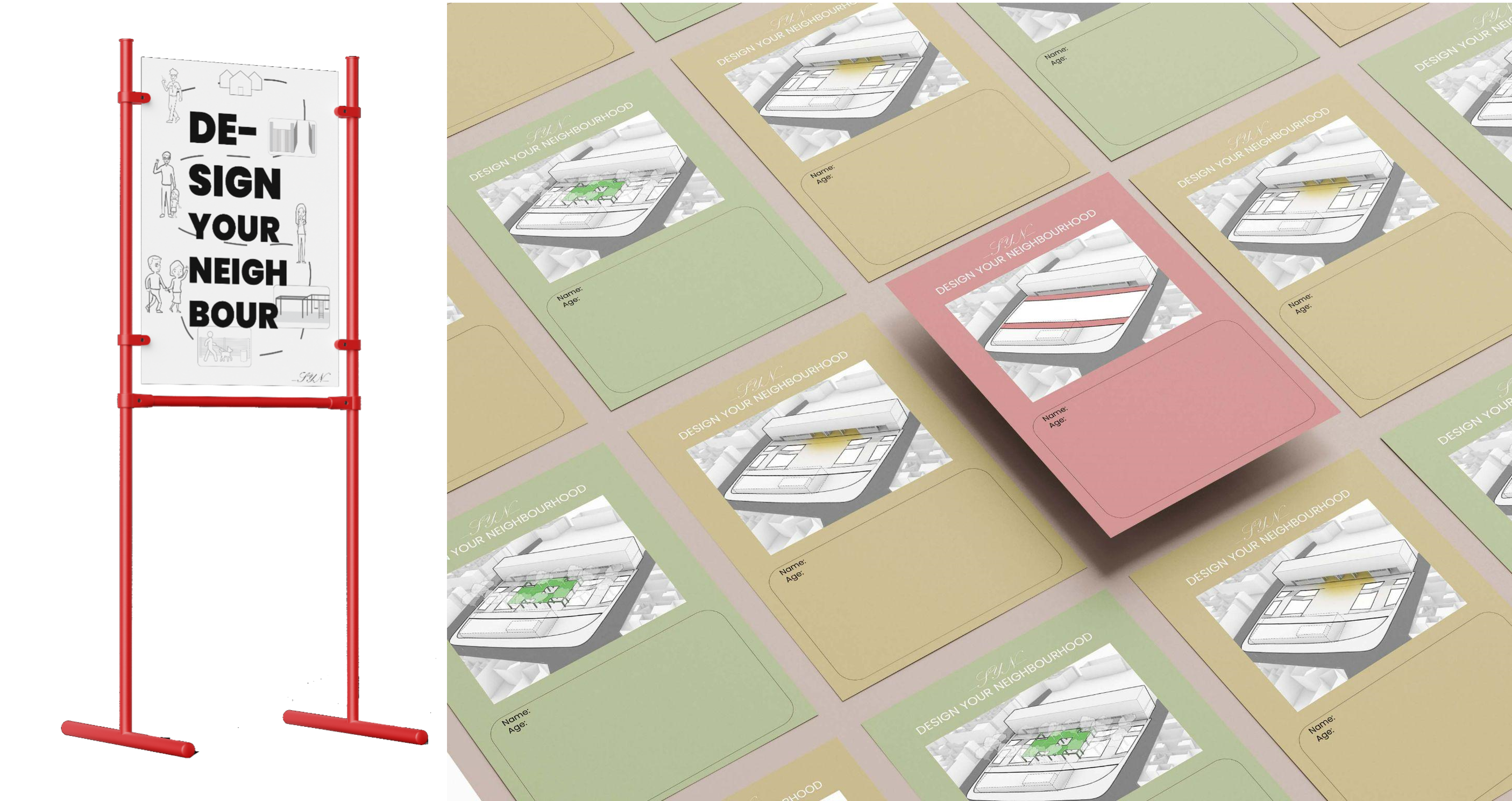Santa Coloma de Gramenet, informally simply known as Santa Coloma, and formerly as Gramenet de Besòs between 1936 and 1939, is a municipality in Barcelonès county, in Catalonia, Spain. It is situated on the south-east side of the coastal range, with the Puig
Castellar as its highest point, on the left bank of the Besòs river. The municipalities of Sant Adrià de Besòs and Badalona separate it from the coast. It is the ninth most populated city in Catalonia.
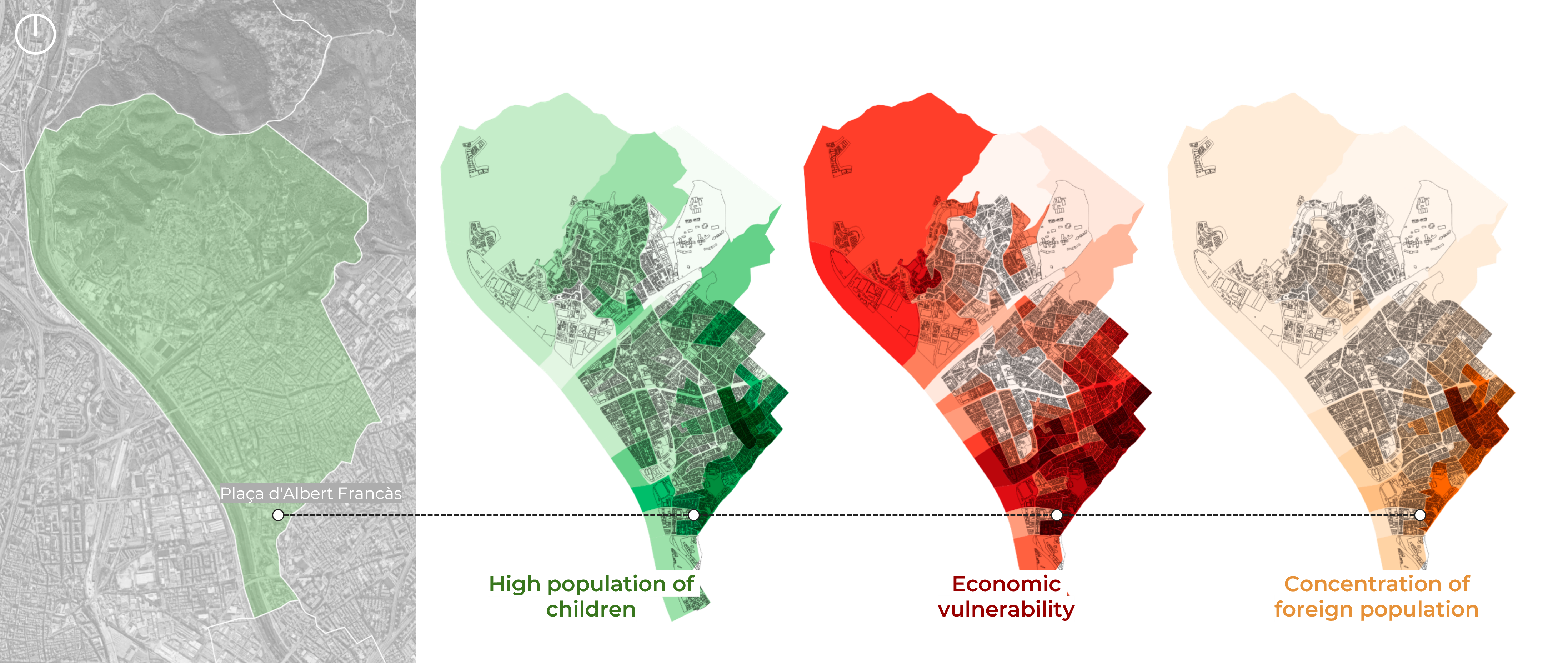
On the 21st of October, we all collectively went to the Santa Coloma Municipality for a site visit and to see the space closely. We were divided into groups of four to visit the four site locations in Santa Coloma. Our group chose site number 3 which was the Place de Albert Francas. This park is located on an inclined walk up the mountain and its main attraction is the children’s playground. We did some site analysis and wrote down our observations to gather information.
This park is located between two buildings – one a police residential and another a hospital. Surrounding the park there is a cafe, two vegetable/fruit shops and a barber shop. Underneath the police residential space there is a locked up fence area from which the view of down the mountain and the Besos river is visible. The main part of this park, as mentioned above, is the children’s playground. It has multiple benches, trees and trash cans. Inside the park there are slides, swings and a water feature.
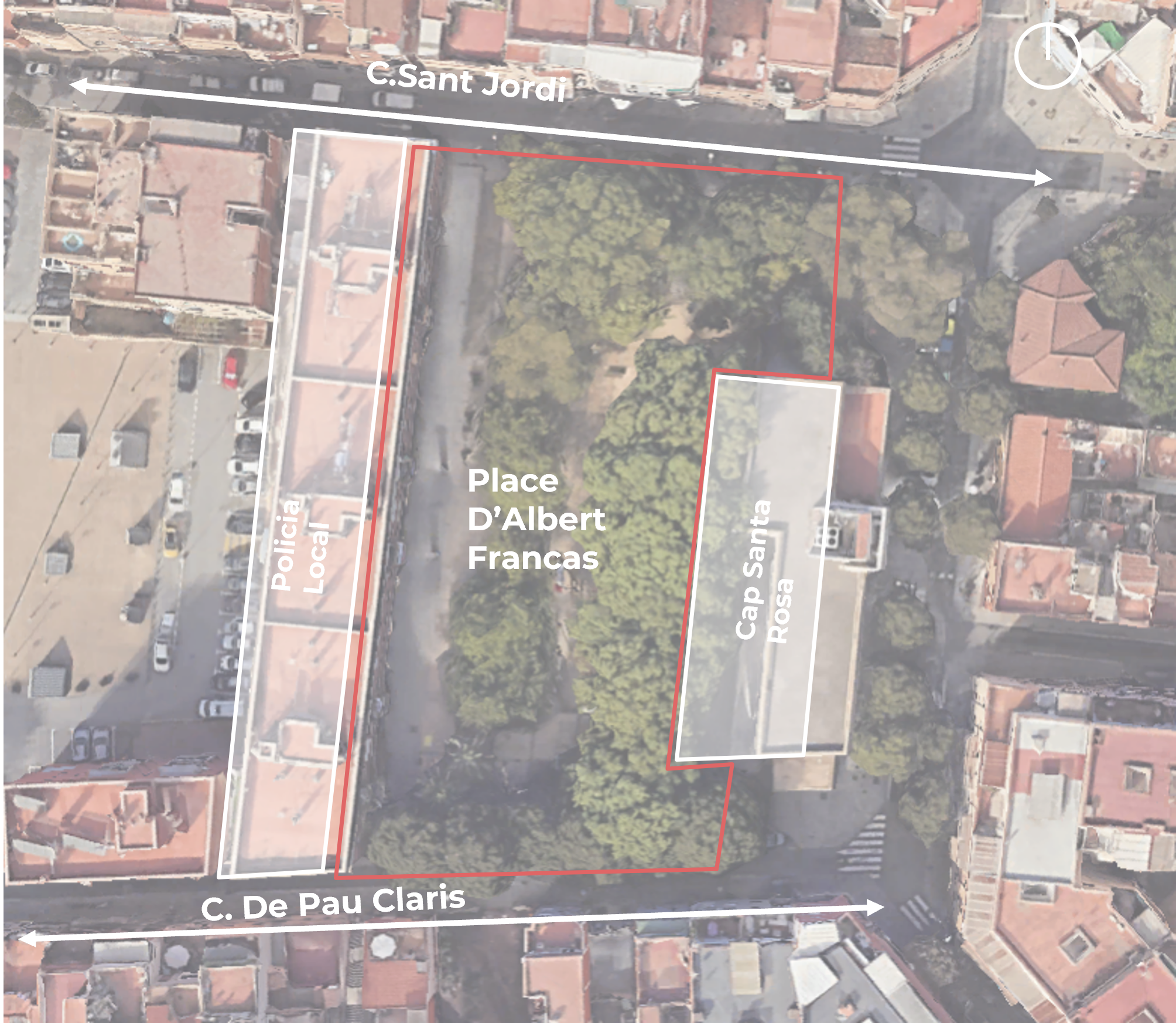
Participatory Methodology
We spoke to some of the people we found at the park at the time of our visit. The main crowd seemed to be old people, immigrants and families with small kids. The majority consensus of the interviews told us that the locals were unhappy with the pigeon waste all over and despite the park not allowing dogs inside, there were dogs inside the park and the smell of dog urine stank all over. We estimated that there was a flow of 500 people per hour at the park, all the areas within the park is quite accessible via paved paths and ramps, there is a downhill bus line within a one block walk, and some of our interviewees said that going to buy groceries all the way down hill from Mercadona was a torture.
Upon asking around more, we analyzed the main issues the locals faced in the park was a lot of pigeon waste due to unsheltered areas, it needs more grass and has dust all over, it stank of dog urine, and overall the space requires maintenance.
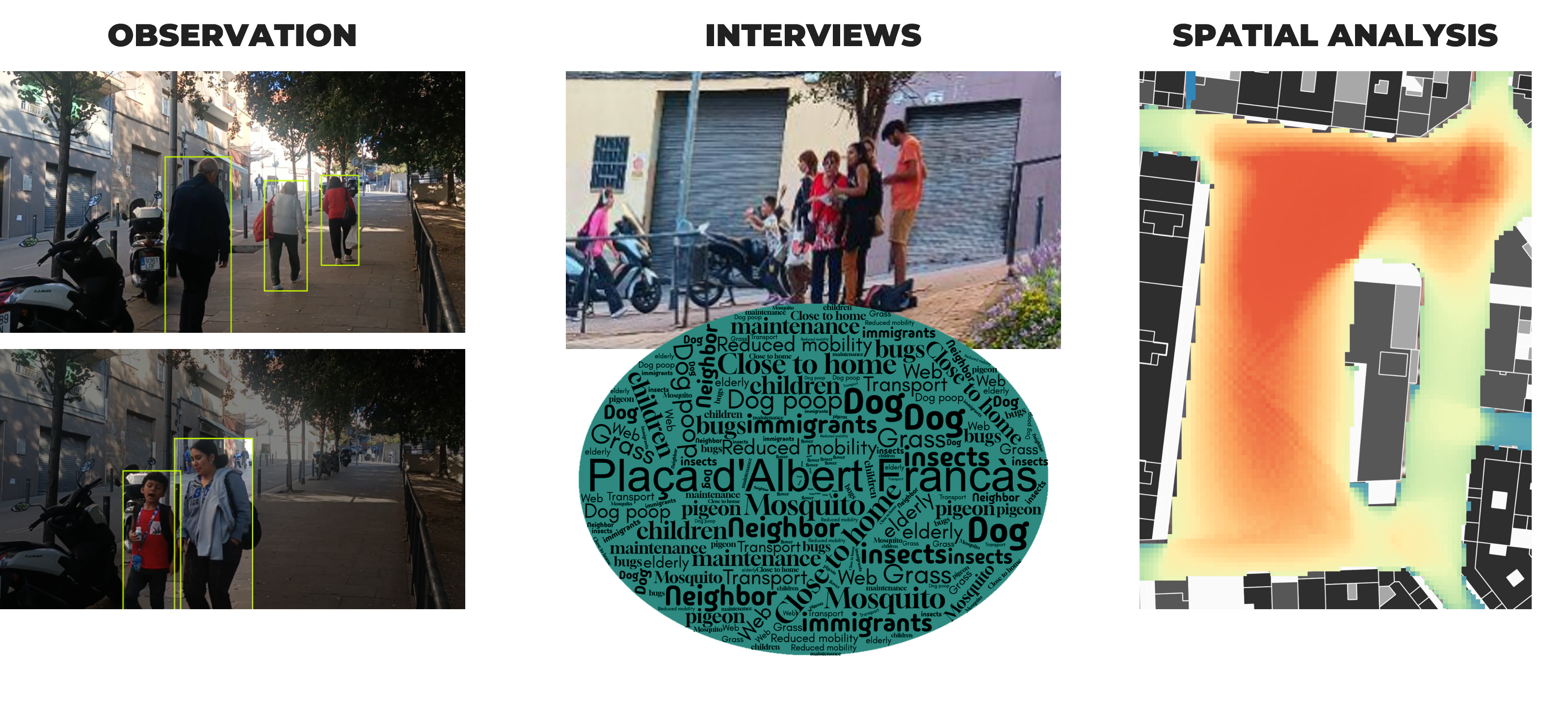

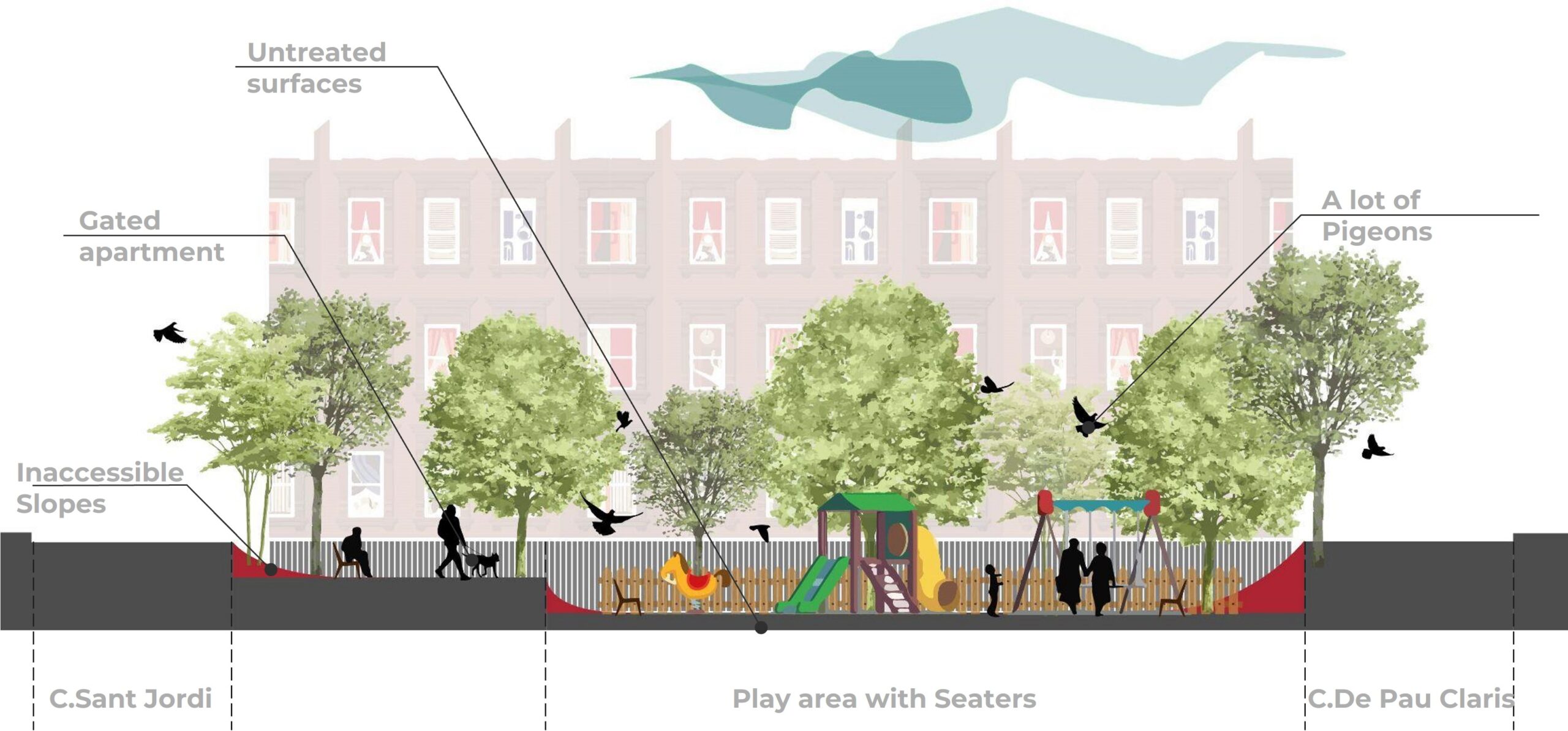
After collecting all this data, we then did some ideation on how this park can be renovated and how it can fit well within all the issues raised by the locals. We came up with one non-negotiable space that is the highest priority, and five negotiable spaces that start from most priority to the least. When we present these options to the locals and co-create with them, we can then finalize which options fit best with the municipality, the locals, the budget and us the designers.
Non-Negotiable Spaces
Our non-negotiable number one priority proposal is to create an axis. This way we generate new transversal connections, attract passers to enter and walk through the park and make it more accessible for people with limited mobility. Regardless of which stakeholder it interests the most, this proposal serves as a starting point and makes it far more accessible than it already is.
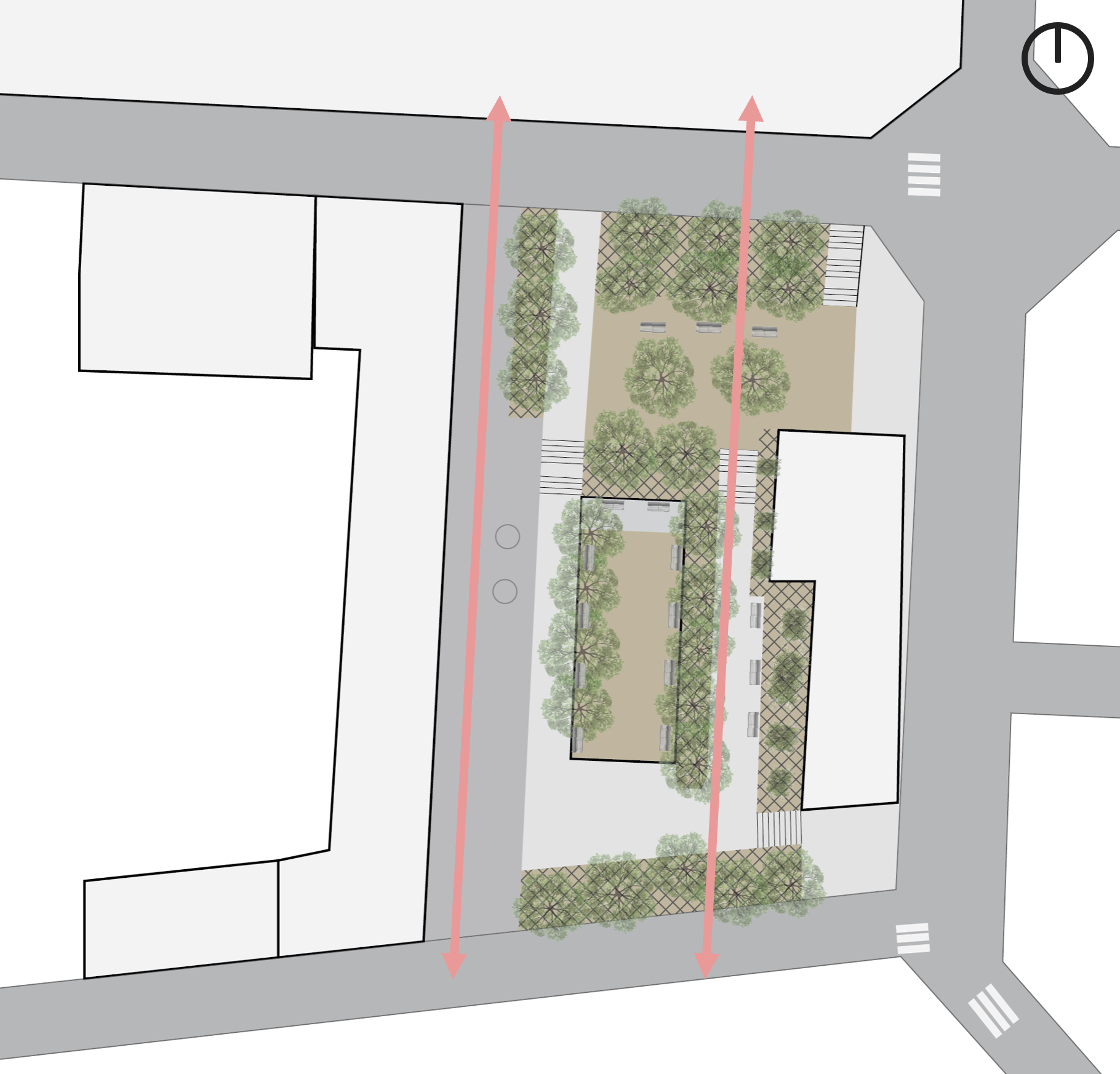
Negotiation Spaces
The negotiable spaces we thought of and then prioritized according to which fit the best from most to least are –
– Central Park
– Dog Zone
– Fence
– Hospital
– Cafe
We prioritize our negotiation spaces with keeping in mind three main factors – the stakeholders involved, how cost efficient it is and how long it would take to implement the idea.
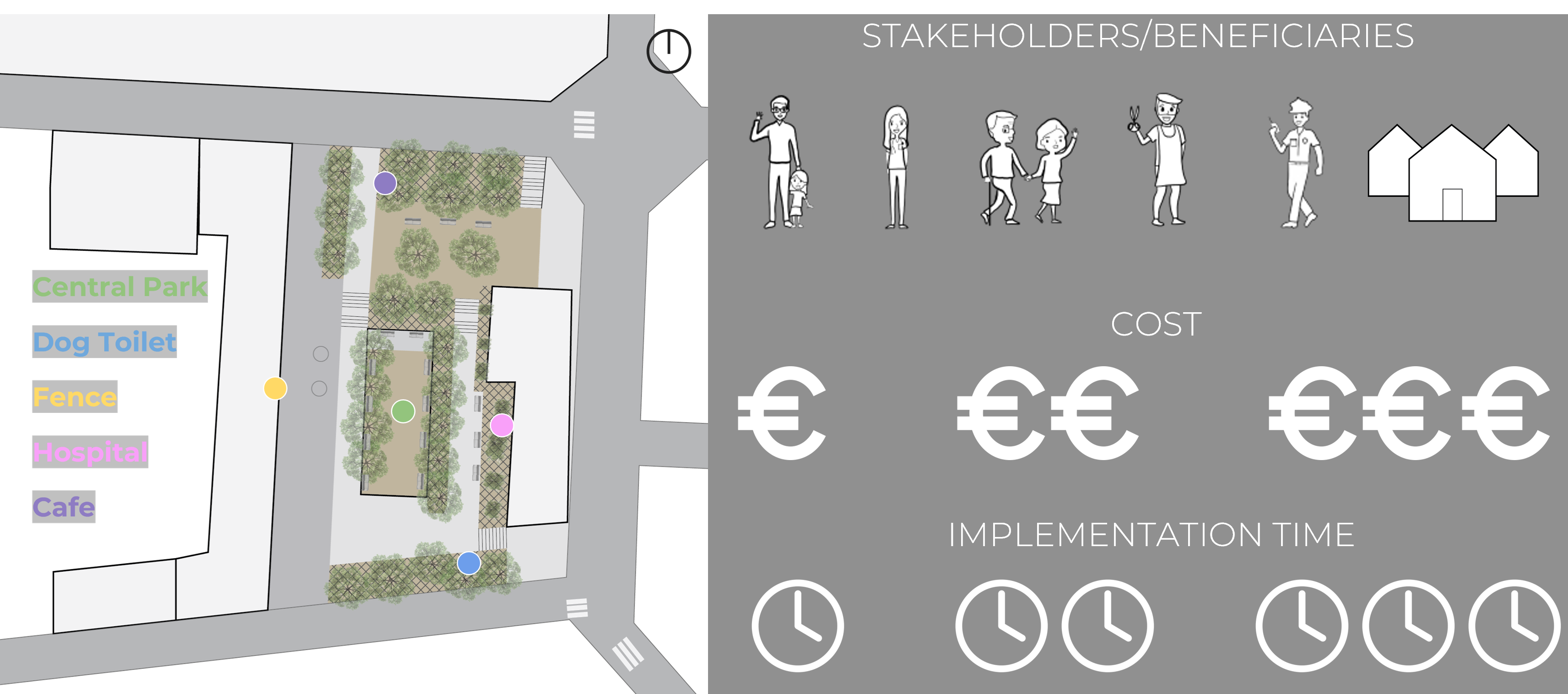
Negotiation Space 1 – Central Park
For the main attraction of the park – the children’s playground we suggested four ideations.
1. Simplest solution, lowest cost would be treating the surfaces / paving. This would help to clean up the park and deter bug issues
2. Reworking the terrain with a new terracing system. 1/2 the terraces are inaccessible now so this will make all of the space usable. More time consuming and expensive
3. Creating a modular playground / intervention. This would provide a shelter that was requested and upgrade the playground for the children. Modularity allows for low cost solution initially and the intervention to grow with time
4. Connecting the hospital with the apartments/police. Most drastic intervention, therefore most costly. This has the potential to bring in the most people to the park
Overall: all viable options but We found 3 to be the optimal solution, highest benefits for the current stakeholders, also aligns with time and budget desires.
Negotiation Space 2 – Dog Zone
For our second priority of the park we chose the dog zone. We suggest four possible ideas.
1. No improvement of current conditions
2. Enforce a dog zone. Requires continuous security/police monitoring
3. Dedicating a fenced in dog toilet zone with trash cans to dispose of dog poop. Allows the owners to let dogs off leash / feel included in the park instead of punishing for using it incorrectly. Inclusive intervention
4. More time and money on the dog zone – This will make our primary users so far happy that the dogs are not ruining their playground / seating areas
Overall: Small dedicated space for dogs, we don’t want to make this a whole dog park but understanding people will use it as such out of convenience
Negotiation Space 3 – Fence
For the fenced space, we decided it was number three with the priority and we proposed four ideas.
1. Closed Fence at all times. This would interest the police local residents however not the other locals of the park who would like to see the view of the hill and the river.
2. Half Open Fence. This way the residents get their space and the locals get to see the views as well, however with no time constraints and it being a low visibility area some people will drink and take their dogs.
3. The Fence Open all the time. This would cause the locals to not have their private space and people would drink, take their dogs at night and all the time.
4. The Fence is half open half the time. This way the residents get their private space, there are time constraints so people don’t take their dogs and drink at night.
Overall – idea four seems the most ideal within all the stakeholders and given that there is already one person assigned to close and open public space doors, it would be the most effective idea.
Negotiation Space 4 – Hospital
For the hospital building, we thought of it as of a lesser priority and suggested two ideas.
1. A Biophilia Wall. A wall that shows green spaces, makes it an attraction. It allows for some green advantages. It is cost effective and overall good for the environment.
2. An Art Wall. A wall of different art pieces that represent the many different cultures of the locals in the space. However, this would be cost heavy.
Overall – we chose idea one as it has the most benefits and seems more visually appealing and viable.
Negotiation Space 5 – Cafe
For our last priority, we show a cafe and suggest two options.
1. Outdoor benches for the cafe. This would take up the space in the pathway and restrict movement,
2. Cafeteria in the public space. This would allow for people to get together for food and drinks, it would eliminate the dust and it would provide a space of some people to rest and grab a drink after climbing the inclined pathway up to the park.
Overall, we chose idea 2 as it provided the most benefits and interests the stakeholders a lot more.
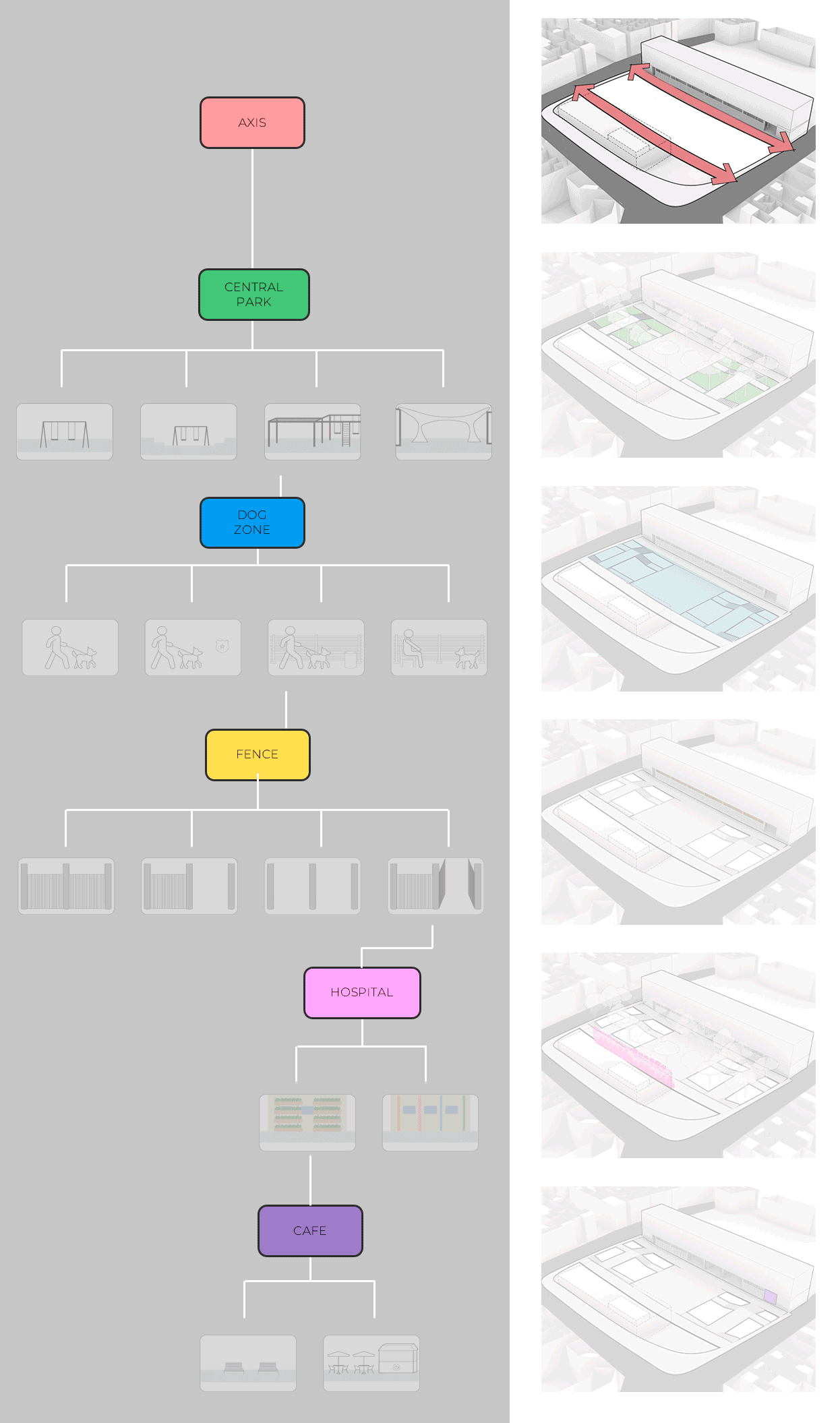
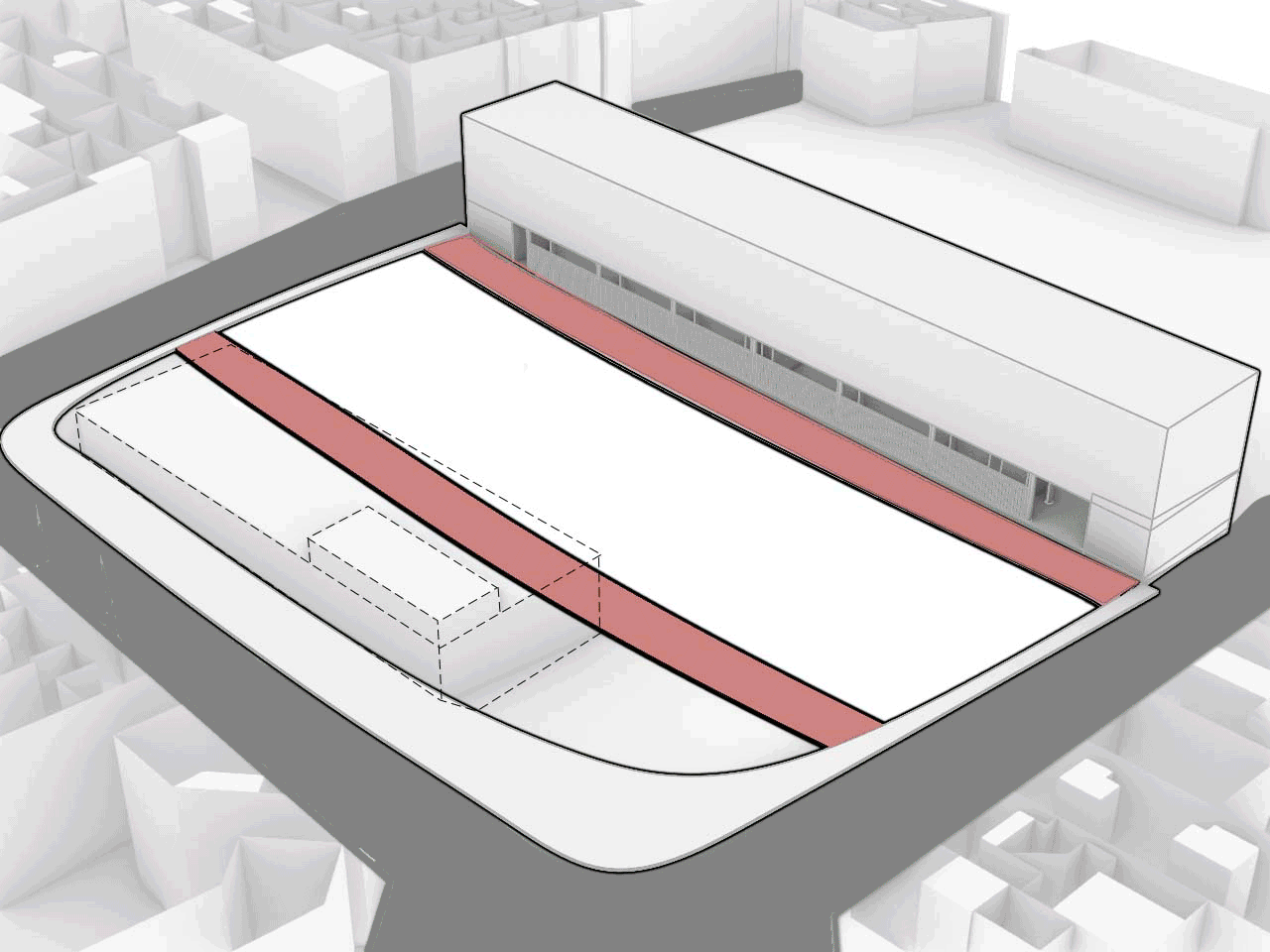
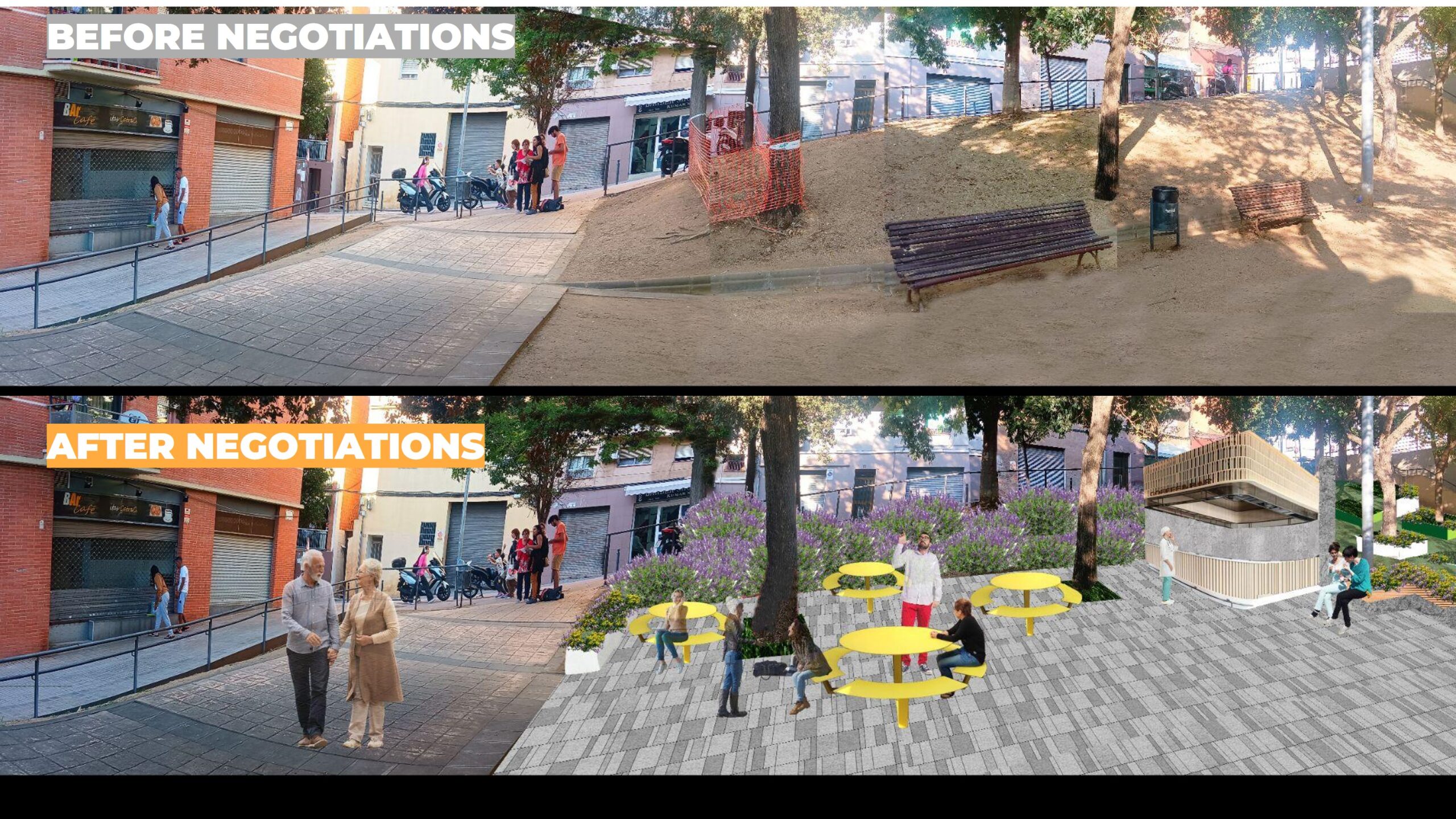
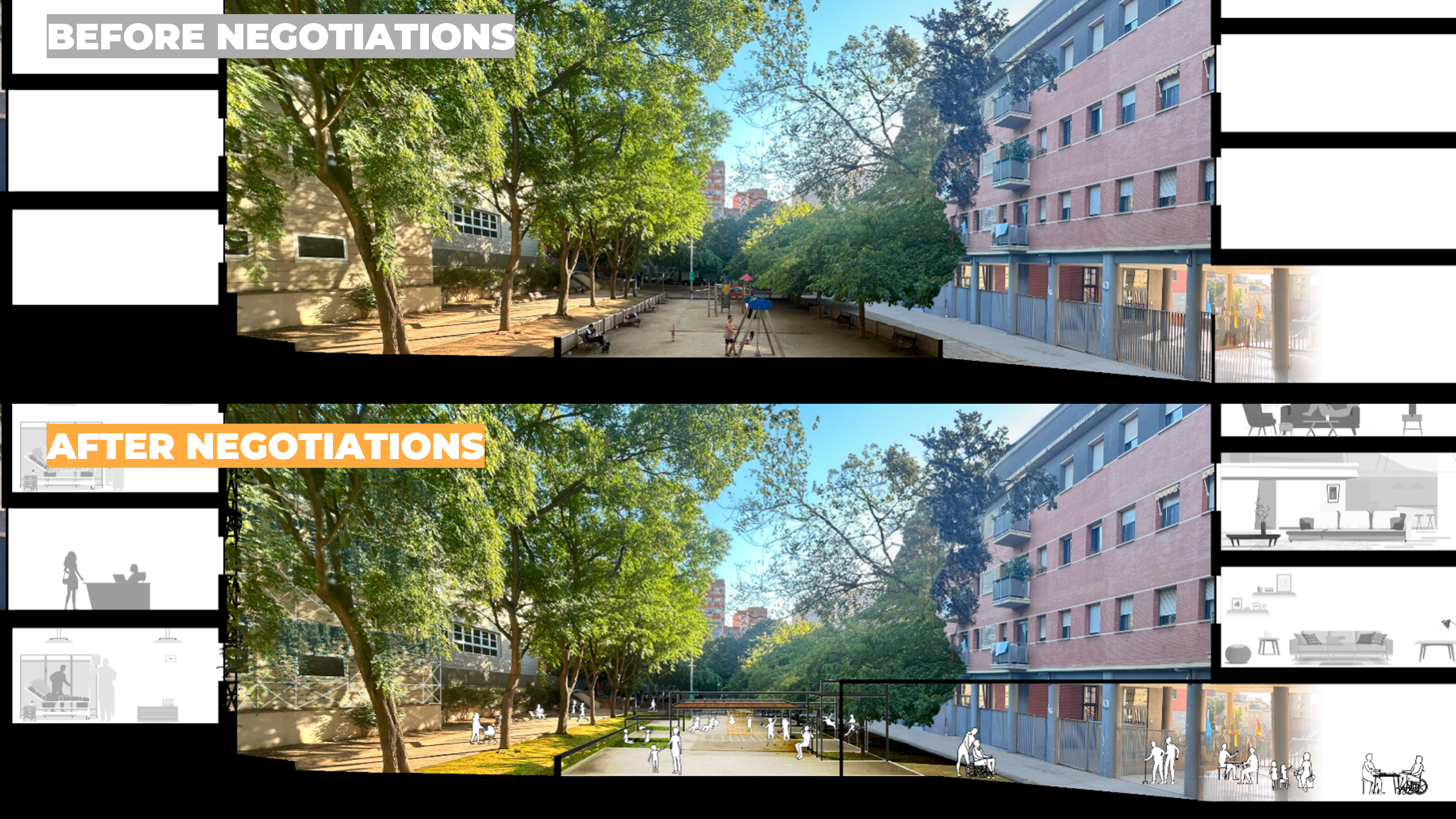
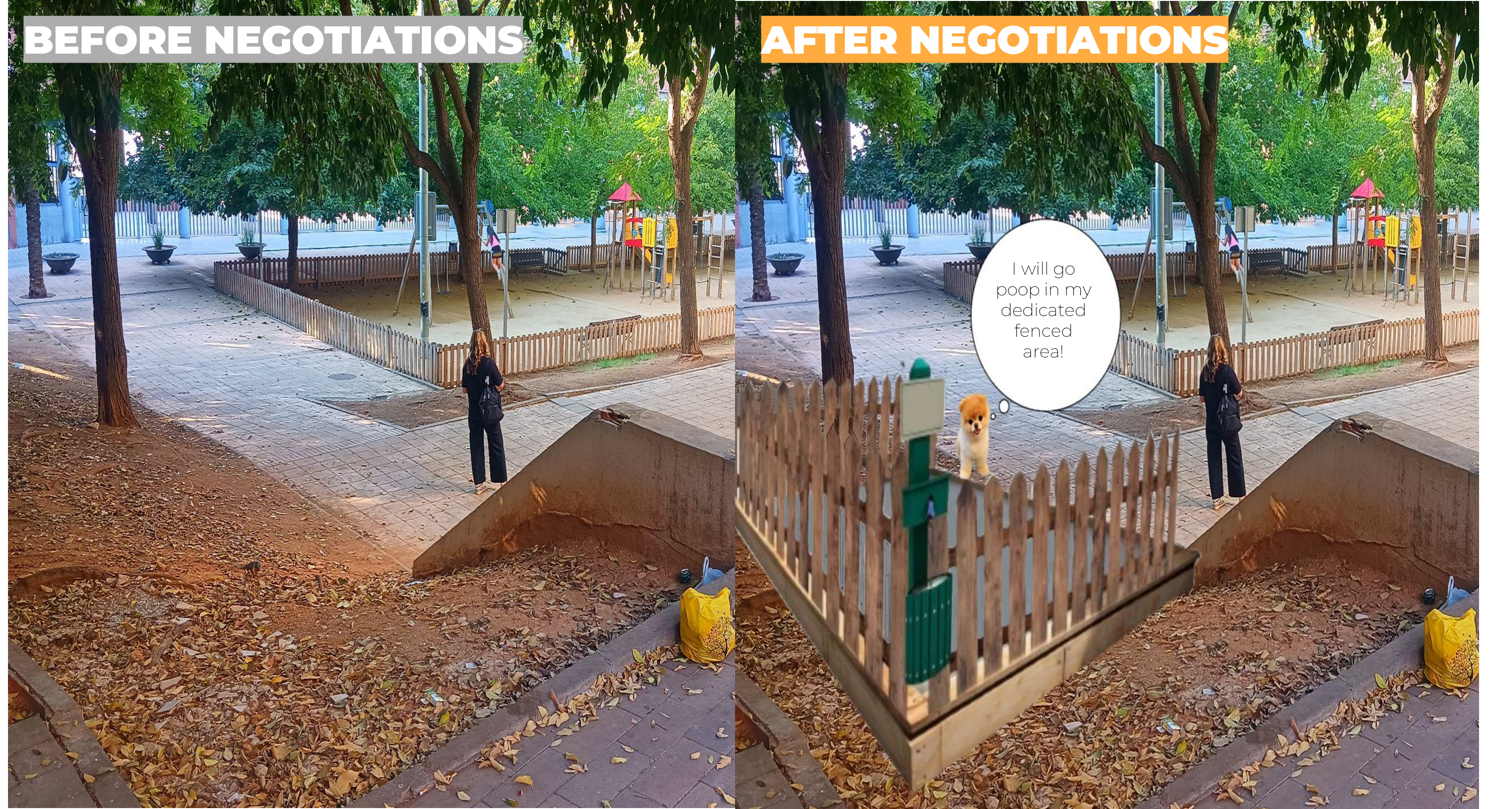
This proposal allowed us to show a lot of different variations and options that best fit the stakeholders and the communities involved. We also work on a lot of the issues raised by the interviewees. We aim to combine the most cost effective and the most beneficial options for the locals. Our next step is to take this proposal and co-create with them to produce the best possible outcome that sits perfectly with the municipality, the stakeholders, the locals and us as designers.
